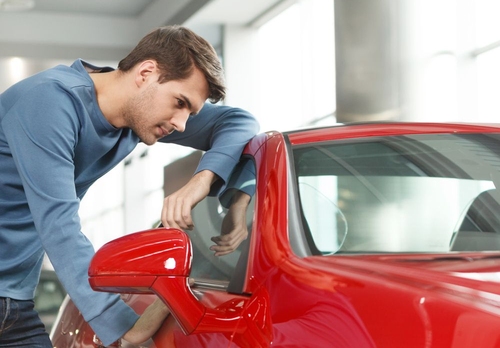Сьогодні: Сб, 12.07.2025 14:41:05
| ЖЖ інфо » Статті » Шопінг » Автомобілі |
Why tinting windows in the car: advantages and rules in Ukraine
Автор: Дмитрий Чистяков, 30.10.2023, 16:21:15
We know that car window tinting is a practice that has become popular not only among car enthusiasts, but also among those who value comfort and safety on the road. In this article we will look at the reasons why drivers prefer to tint the windows of their cars and discuss important aspects of this procedure, especially in the context of Ukrainian legislation.
Car window tinting is not just a fashion trend, but an important solution that provides comfort, privacy and safety on the road. It protects from bad weather, UV rays and prying eyes of others, making traveling more pleasant and safe. It is important to remember that tinting should not only be stylish, but also legal, meeting the light transmission standards set by law. By using tinting correctly and following the laws, you create the perfect balance between functionality, comfort and aesthetics, making every trip truly enjoyable and safe.
1. What are tinted windows for?
Tinting car windows performs several functions: - Protection from sunlight: The tinting film blocks ultraviolet rays, preventing overheating of the interior and protecting the skin of the driver and passengers from the harmful effects of the sun. - Privacy and security: Tinting provides privacy inside the vehicle, preventing casual glances from others and reducing the risk of theft. - Increased comfort: Protecting against glare and light intensity in the cabin makes traveling more pleasant and comfortable.2. Why can't car windows be tinted?
There are some restrictions and rules related to tinting car windows: Level of light transmission: The legislation of many countries, including Ukraine, sets the maximum permissible level of light transmission for front and rear windows to ensure visibility and safety on the road.3. Can I drive with tinting in Ukraine?
There are certain rules regarding tinting of windows in Ukraine. Legislation allows tinting of side windows and rear window, provided that the level of light transmission is not less than 25% for the front windows and not less than 70% for the windshield, as well as the car ceramic coating.4. What is the good of tinting?
Reducing cabin temperature: Tinting helps reduce cabin heat, making travel more comfortable, especially in hot weather. - UV protection: Tinting film blocks harmful UV rays, preventing damage to your skin and car interior. - Appearance Enhancement: Tinting adds style and elegance to your car, giving it a unique look.5. What can't be tinted in a car?
There are certain parts of the car that cannot be tinted: - Front windows: Front window tinting is prohibited in most countries or subject to strict light transmission standards. - Headlights and taillights: Tinting headlights and taillights can reduce visibility to drivers of other cars, which is dangerous on the road.6. What should I not do after tinting my windows?
After tinting, it is important to observe certain precautions: - Do not wash the windows: It is not recommended to wash tinted windows in the first few days after installation to avoid damage to the film. - Avoid mechanical damage: The tint film is susceptible to scratches and damage, so it is important to avoid contact with sharp objects.7. What must not be done after tinting is installed?
Violation of legislation: It is important to ensure that the tinting complies with the light transmission standards set by law. - Changing the color of the film: Some countries require the color of the tinting to be uniform, without transitions or shades.8. Can I drive with tinting?
Yes, you can. However, it is important to follow the legal regulations when installing tinting to avoid fines and unpleasant situations on the road.Car window tinting is not just a fashion trend, but an important solution that provides comfort, privacy and safety on the road. It protects from bad weather, UV rays and prying eyes of others, making traveling more pleasant and safe. It is important to remember that tinting should not only be stylish, but also legal, meeting the light transmission standards set by law. By using tinting correctly and following the laws, you create the perfect balance between functionality, comfort and aesthetics, making every trip truly enjoyable and safe.
Автор: Дмитрий Чистяков, редактор рубрики "Автомобілі" на ЖЖ.info
Автомобілі | 30.10.2023 | Переглядів: 12838 |
